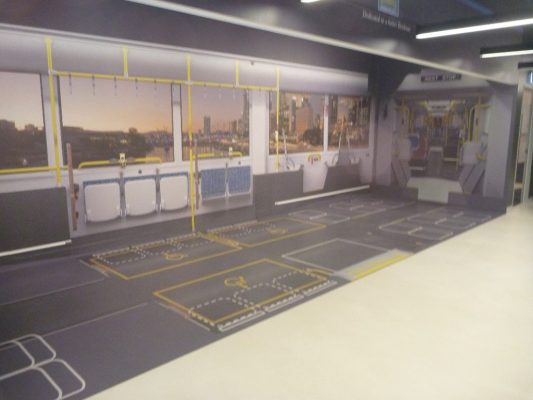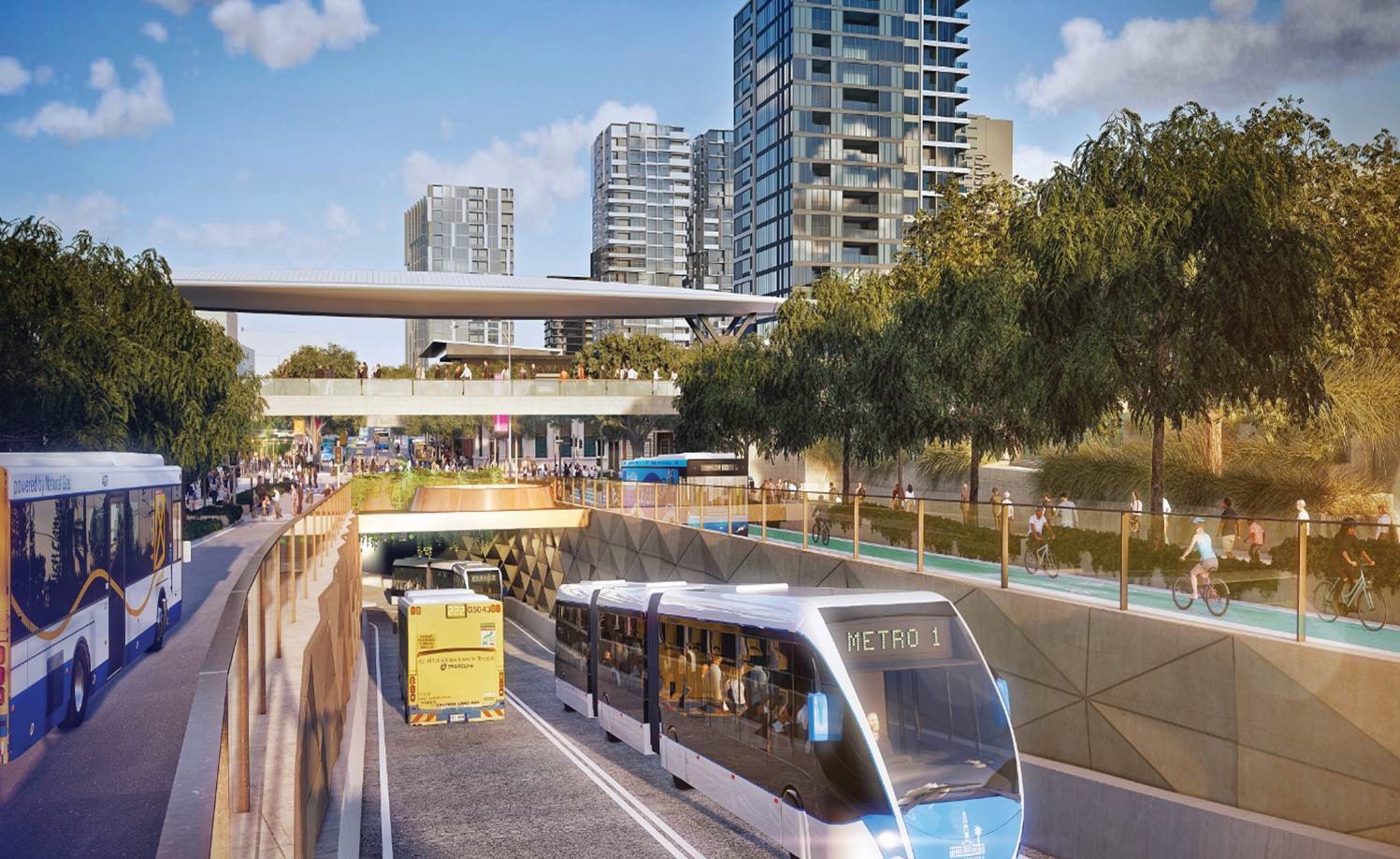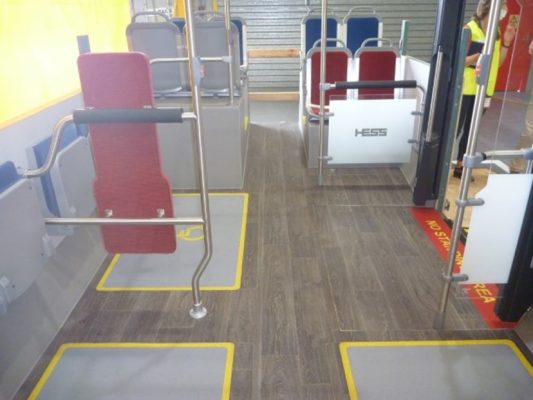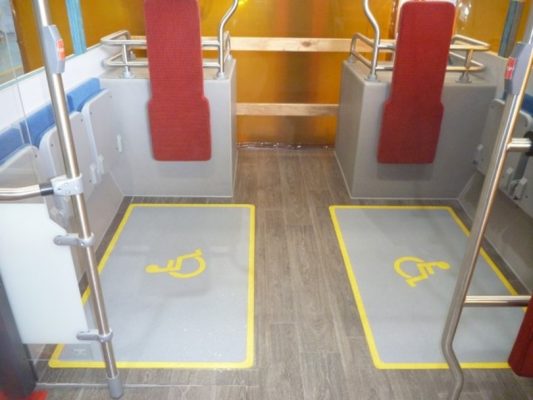Faster, more efficient, and accessible transport for Brisbane
The Disability Standards for Accessible Public Transport 2022 (DSAPT) is currently undergoing a reform process. https://www.infrastructure.gov.au/infrastructure-transport-vehicles/transport-accessibility/reform-disability-standards-accessible-public-transport-2002-transport-standards
Transport projects in Queensland have been under the microscope since the New Generation Rollingstock (NGR) Forde Commission of Inquiry 2018, where 24 recommendations for improvement in delivering accessible public transport solutions were released. https://www.traininquiryngr.qld.gov.au/
As access consultants providing advice regarding the DSAPT technical requirements, we still need to overcome the challenges posed by the DSAPT that rely on outdated Australian standards and practices. Delivering an accessible conveyance also has the added constraints of the vehicle itself and surrounding infrastructure, such as track and vehicle width and platform interface.
Architecture & Access is currently involved in the Brisbane Metro Vehicle project (engaged by Brisbane City Council, BCC) and the Queensland Rail existing rolling stock DSAPT upgrade, with the objective to meet the functional compliance outcomes of the Disability Standards for Accessible Public Transport 2002 (DSAPT).
There are two areas of compliance in the DSAPT which do not provide technical guidance and can therefore only be achieved through demonstration. This demonstration has been conducted with the Brisbane Metro Vehicle Project and Queensland Rail IMU 160 Cityfleet overhaul.
These two DSAPT Parts are:
DSAPT Part 3 Manoeuvring areas
3.2 Conveyances – Access for passengers in wheelchairs, etc.
(1) Passengers in wheelchairs or mobility aids must be able to enter and exit a conveyance and position their aids in the allocated space
and
DSAPT Part 15 Toilets
15.4 Conveyances – requirements for accessible toilets (ferries and accessible rail cars)
(1) An accessible toilet must:
(a) comply with the requirements set out in this section; and
(b) allow passengers in wheelchairs or mobility aids to enter, position their aids and exit.
In this article we will discuss DSAPT Part 3.2 and the demonstration outcomes within the Brisbane Metro project. We will discuss DSAPT Part 15.4 in next month’s newsletter.
DSAPT Part 3.2 Manoeuvring areas
In proving DSAPT compliance, the solution we used included the following process of consultation and collaboration with people with lived experience of disability. This relates to the NGR Forde Commission of Inquiry recommendations 17- 20 requiring consultation with the disability sector.
Recommendation 19: Consultation with the disability sector about the design of public transport infrastructure (undertaken before, during or after procurement) be structured around the obligations of the disability legislation and functional requirements.

The Brisbane Metro project has gone through extensive consultation involving a series of interactive sessions with the Brisbane Metro Accessibility Working Group (BM-AWG), as well as independent research conducted by Federation University in Victoria, regarding circulation and manoeuvrability of mobility devices. These interactive sessions began with a taped-out mock-up of the first section of the vehicle where the allocated spaces are located. This initial interaction informed changes to the design regarding length of allocated space and location of handholds to ensure optimum manoeuvrability (Image 1).
The next step was to then transfer to a full-sized mock-up which was assessed by several members of the BM-AWG, as well as research conducted by Federation University (Image 2 & 3).
Extract below:
“The first assessment aimed to determine an optimal form of WTORs (Wheelchair Tie down and Occupant Restraint System- Passive) for use on metros to ensure safe travel for all passengers, and a rearward facing WTORS was recommended.
WTORS, where there is no need for the mobility device user or another person to manually affix strapping of any kind. For example, relies on person positioning mobility device against a padded backboard, with lateral stanchion support.
As the design of this passive WTORS progressed, the second assessment used the 3D render of the emerging design for the metros to determine compliance of the vehicle with the DSAPT, and the fit of a range of powered mobility devices in the three allocated spaces on the metro. It was found that only 4 of the 35 mobility devices tested could not access any of the 3 allocated spaces on the metro and this compared very favourably to other buses previously tested. The final phase of testing reported here involved 6 participants in their mobility devices (4 people using powered wheelchairs and 2 using mobility scooters) accessing the mock-up version of the metro and providing their feedback of accessibility, and time trials to determine if priority boarding is needed to support smooth access for all passengers using the metro”.
Unsworth, C.A. & Flores, P. (2021). Promoting access and transit safety for mobility device users on Brisbane Metro vehicles: Mock-up trial findings and overall recommendations (Tech. Rep 3). Brisbane City Council Qld.

Full sized mock up Image 2. 
Full size mock up Image 3.
The conclusion of the research confirmed compliance with the DSAPT Part 3.2 which provided confidence for BCC to progress to the next stage of manufacturing a pilot metro. The pilot metro will be assessed further by the BM-AWG and Federation University in June this year to consolidate the proposed functional layout and options for passive and active WTORS options. This will ensure a compliant and functional vehicle that provides a safe and equitable journey for all users.
“Wheelchair Tie down and Occupant Restraint System – Active, where there is a need for the mobility device user or another person to manually affix some form of strapping or tie down system between the wheelchair and the bus.
Restraint systems may take 3 forms:
- Bus seatbelt (person to mobility device to bus- Active WTORS)
- Mobility device restraint (mobility device to bus- Active WTORS)
Mobility device seatbelt (person to mobility device- this is a personal restraint and not a WTORS)”.

The public can experience a full-size mock-up of the front passenger compartment of a Metro vehicle at the Brisbane Metro Information Centre (Photo 4), located at 63 Adelaide St Brisbane.
In our next newsletter the second project will be discussed. This second element is the Queensland Rail Functional Toilet Module Mock-up assessment as part of the IMU160 existing rolling stock overhaul upgrading DSAPT Part 15. 4 (b).
Did you know?
The Brisbane Metro will be a key part of Brisbane’s greater transport network connecting the city to the suburbs. The network will provide a 21-kilometre service connecting 18 stations along dedicated busways between Eight Mile Plains and Roma Street, and Royal Brisbane and Women’s Hospital and University of Queensland.
The $1.7b Brisbane Metro project will include a new fleet of up to 60 high-capacity metros, each able to carry up to 150 customers. The metros are an Australian first and include the high-quality and high-capacity features of a light rail vehicle while avoiding the need for tracks, overhead line equipment and infrastructure by utilising the existing busway. The vehicle will provide three allocated spaces and a button-activated retractable electric ramp amongst many other accessibility features. The metros will integrate seamlessly into busway operations, sharing the busway with existing bus services, as part of a better planned network.


